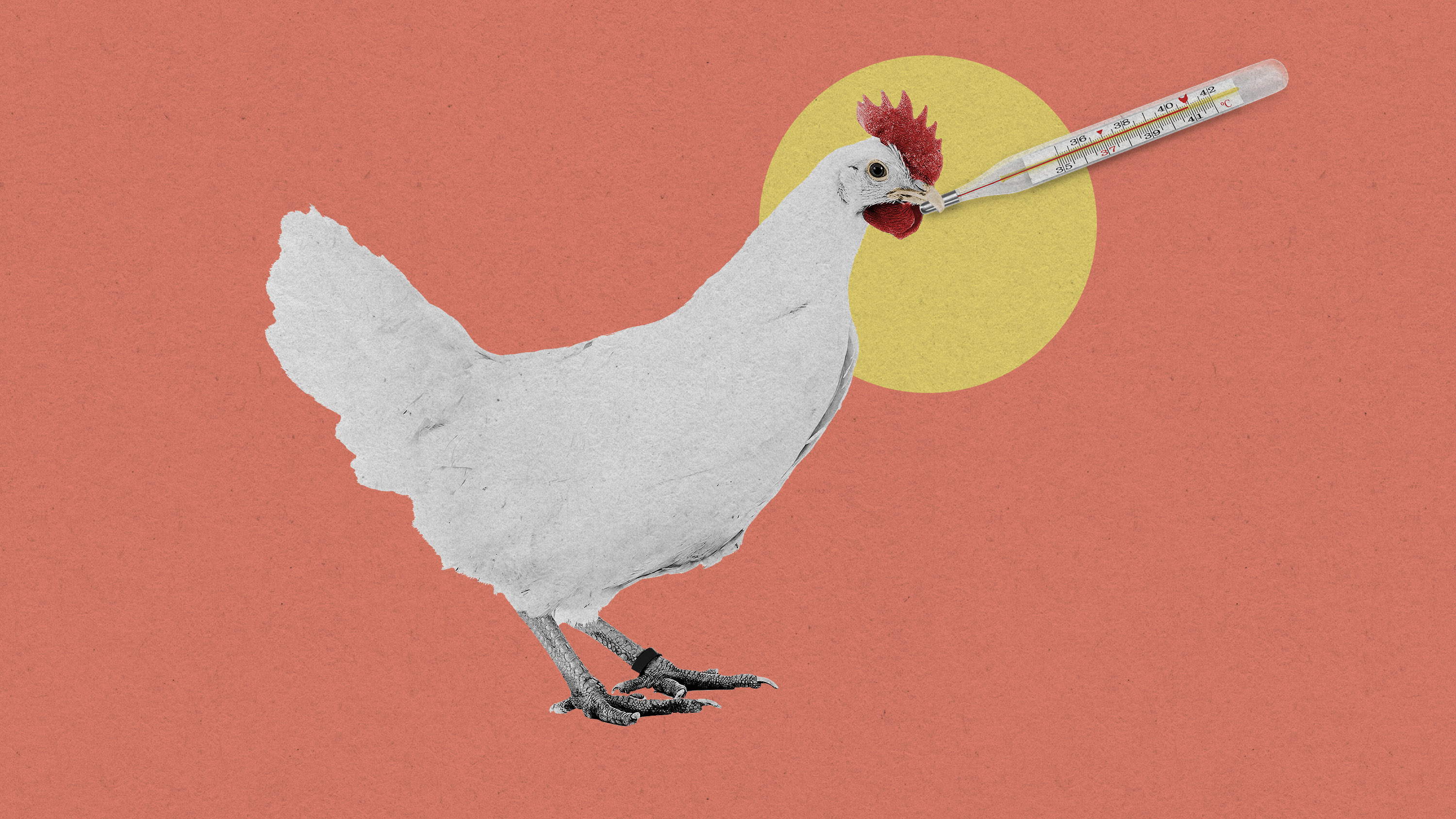How gene editing could help curb the spread of bird flu
The disease kills millions of birds each year, and it has recently started to spread among mammals too.

Gene editing could help prevent chickens from catching and spreading bird flu, according to a proof-of-concept study.
Researchers used the gene-editing tool CRISPR to alter the DNA of 10 chickens to resist the bird flu virus and then exposed all of them to a low dose of it. Only one of the 10 chickens caught the virus, and that chicken did not pass it on to any others.
“What this shows is that there’s a proof of concept that we can use to move toward making chickens resistant to the virus. But we’re not there yet,” Wendy Barclay, a virologist and professor at Imperial College London, who co-led the research, said on a press conference call. The study was published today in Nature Communications.
Bird flu has killed millions of both wild and farmed birds across the world in recent years. It has increasingly affected mammals as well, raising fears among virologists that the virus could adapt to infect humans.
For the chicken study, the team made changes to a protein gene in the birds’ sperm and eggs. This protein, called ANP32A, helps flu viruses attack chickens’ systems. By rearranging the DNA letters of the ANP32A protein, the researchers were able to restrict the flu virus from infecting the chickens.
“The genetic changes that we made were changes we knew will stop the growth of the virus in the chicken cells,” Alewo Idoko-Akoh, a research fellow at the University of Edinburgh’s Roslin Institute, who was part of the study, explained.
To further test the resilience of the gene-edited birds, the researchers exposed them to a second, higher dose of the bird flu virus. Of the 10, five became infected. Still, the gene edit did provide some level of protection. The researchers also found that the intervention limited spread of the virus: only one of four non-gene-edited chickens placed in the same incubator got infected, and there was no transmission to gene-edited chickens.
However, the research team found that in the gene-edited birds, the virus adapted to enlist the support of two related proteins—ANP32B and ANP32E—to replicate.
This suggests that editing the single gene the researchers targeted is not a robust enough method to work, says Alison Van Eenennaam, an animal geneticist at University of California, Davis, who was not involved in the research.
The researchers behind the study agree; they next plan to try to develop chickens with edits to all three genes. It could take decades to work through the necessary technical and regulatory steps, but researchers say CRISPR gene editing could eventually save countless chickens’ lives—and transform animal farming. “Chickens rock,” says Van Eenennaam. “It’ll be great to use this technology to produce animals that are not susceptible to diseases.”
Deep Dive
Biotechnology and health
How scientists traced a mysterious covid case back to six toilets
When wastewater surveillance turns into a hunt for a single infected individual, the ethics get tricky.
An AI-driven “factory of drugs” claims to have hit a big milestone
Insilico is part of a wave of companies betting on AI as the "next amazing revolution" in biology
The quest to legitimize longevity medicine
Longevity clinics offer a mix of services that largely cater to the wealthy. Now there’s a push to establish their work as a credible medical field.
There is a new most expensive drug in the world. Price tag: $4.25 million
But will the latest gene therapy suffer the curse of the costliest drug?
Stay connected
Get the latest updates from
MIT Technology Review
Discover special offers, top stories, upcoming events, and more.